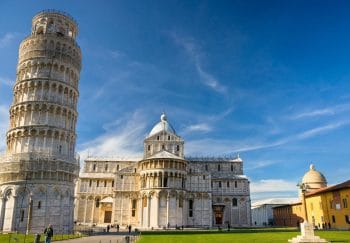Traditions and customs can be timeless. Traditions that involve tourists take them to another world full of beauty and charm, where they can experience a mix of devotion and theatre. One of these traditions is the feast at Santa Rosalia. It is known in Palermo as ‘u fistinu. It is held in the most beautiful locations of Palermo during July.
Even the most renowned travelers of the nineteenth and eighteenth centuries were surprised by this feast. This great event is led by Santa Rosalia, who is especially dear to Palermo because of her contribution in fighting the plague in 1624.
It is a memorable experience to watch the people marching through the streets on July 14th. The procession begins at the Cathedral, and ends at the Foro Italico via Cassaro. It follows a path that includes references to pain and culminates with the joyous celebration of life with lots of fireworks. The procession’s head is the Archbishop of Palermo and the Mayor of Palermo. They drive the people who are enthusiastically celebrating the Saint and join a larger parade.
The magnificent, vessel-shaped chariot is the center of the procession. It is made different each year and carries the Statue Saint Rosalia. It is a truly itinerant stage. Ten meters high, and almost as long, it is pulled by oxen (in 17th century, they were pulled by elephants!). It is richly decorated with angels, roses, and newts. They are crafted from baroque and gold colors. The people dance all around the stage, creating incredible choreographies with lighting effects while praising Viva Palermo!
The relics and ashes of the Saint are carried in a silver urn on July 15,. Masses are held in her honour. Finally, the urn is returned to the Cathedral to be blessed by the Archbishop de Palermo. Rosalia Sinibaldi only lived for a few years in the twelth Century. She was a heremit, moving from Santo Stefano di Quisquina up to Monte Pellegrino mainly to escape her noble family’s will. According to legend, Saint Rosalia appeared during the great plague in Palermo four centuries after her death to honor her remains, which were found in a cave. Amazingly, such relics were able to pass through Palermo’s streets and heal the people who followed them.
Even today, songs still praise the Santuzza
Notti e ghiornu faria sta via!
Viva Santa Rusulia
Ogni passu ed ogni via!
Viva Santa Rusulia
Ca nni scanza di morti ria!
Viva Santa Rusulia
Ca nn’assisti a l’agunia!
Viva Santa Rusulia
Virginedda gluriusa e pia
Viva Santa Rusulia
u fistinu, a must for those who seek to find the real Sicily with its extraordinary combination of faith, joy and sacred representations and celebrations celebrating the victory over death and collective identity, is essential .











